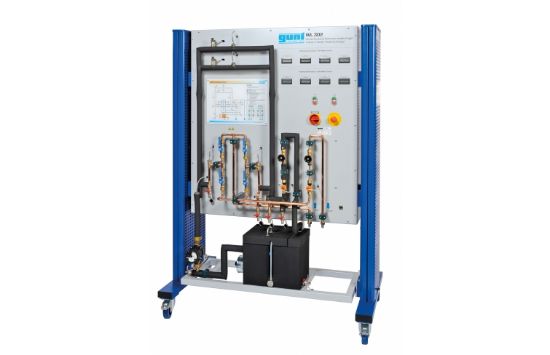GUNT tubular heat exchangers are the simplest type of heat exchanger and are preferably used when heat is transferred at high pressure differences or between highly viscous media (e.g. sewage sludge). One advantage is that the pipe space is flowed through evenly and is free of flow dead zones.
Product Features
- Model of a tubular heat exchanger with coaxially arranged tubes.
- Hot water passes through the inner tube; cold water flows in the outer tube to transfer heat.
- Demonstrates both parallel flow and counterflow operation with different temperature curves.
- Temperature measurement at inlet, outlet, and mid-section in both tubes for detailed analysis.
- Pipe wall temperature measurement enables investigation of convective heat transfer.
- Determination of heat flux, overall heat transfer coefficient, and heat losses during experiments.
- Closed hot water circuit with tank, electrical heater, and pump; thermostat maintains constant hot water temperature.
- Cold water supplied and disposed of via laboratory network.
- Flow rate and all relevant temperatures recorded and digitally displayed.
- Measured values can be transmitted via USB to a PC for software-supported analysis.
Benefits
- Enables hands-on understanding of heat transfer principles in tubular heat exchangers.
- Provides clear visualization of temperature profiles in different flow configurations.
- Accurate measurement tools and software integration facilitate detailed experiment analysis.
Why Choose the GUNT Tubular Heat Exchanger Model?
This model offers practical insights into heat exchanger operation and thermal behaviour, ideal for academic and research environments.

